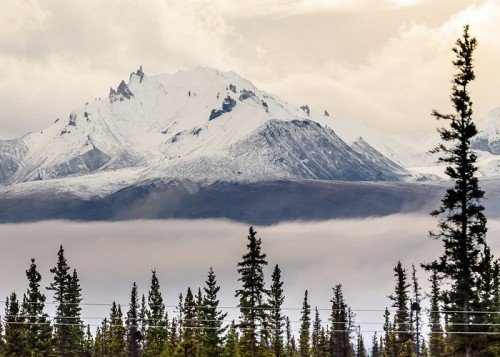Alaska

Entrepreneurial optimism is driving a global recovery, as evidenced by an increased number of countries where more than half of entrepreneurs are finding new opportunities in the midst of the pandemic. In 2021, only 18 out 46 economies saw that starting a business had become harder - compared to 33 out of 46 last year! This indicates how resilient our world has proven to be during these challenging times.
Alaska's Native American History
The first people migrated to Alaska around 15,000 years ago, during the Ice Age. At that time, a frozen land bridge known as Beringia extended from Siberia to eastern Alaska, and migrants followed herds of animals across it. These people split into two groups: One group stayed in Beringia, while the other group migrated down into North and South America. This second group is considered the ancestors of all Native Americans in the Americas. The first permanent settlements in Alaska date to about 4,000 years ago. Most Indigenous people hunted sea mammals such as whales, although those living inland hunted caribou.
In the 1700s, Russian settlers began interacting with Indigenous Alaskans. While some were untouched by European colonists, those living closer to the Aleutian Islands got a hostile introduction when their people were taken hostage and made to hunt for them. Despite this inauspicious beginning, many Alaskan natives married Russians over time - creating "Creoles," an interesting fusion of both cultures that carries on today.
Alaska is home to a vibrant Indigenous population, representing 11 distinct cultures across five regions. Despite facing devastating losses in the early 20th century due to American settlers and their diseases, Alaska has maintained its place as the highest populated state for Native Americans with an estimated 16% of residents being part of this demographic today. It's history goes back even further; Russian explorer Mikhail Gvozdev was among one of many explorers who mapped Alaska during his voyage in 1732 - kickstarting colonization by Russia that would remain until 1867 when United States purchased it from them at $7 million dollars.
Russian explorer Mikhail Gvozdev mapped Alaska and the North American coastline in 1735, although strong winds prevented him from landing. In 1741, Danish-born explorer Vitus Jonassen Bering and his crew sailed between Russia and North America for Russian Czar Peter the Great and became the first Europeans to explore parts of Alaska. For the following decades, private traders known as promyshlenniki returned to hunt seasonally in Alaska for furs.
Russia controlled most of the area that is now Alaska from the late 1700s until the mid-1800s, when the fur trade began to fail for ecological and commercial reasons, and Russia decided to focus its efforts to the east. After losing the Crimean War to Great Britain in 1856, the Russian government didn’t want to sell Alaska to the British, who wanted to add to their territory in British North America (modern-day Canada). Instead, Russia began looking to sell Alaska to the United States.
The Alaska Gold Rush and Exploration
The Gold Rush of the late 1800s sparked a frenzy of prospecting and exploration that brought over 160,000 keen adventurers to Alaska. Along with them came renowned author Jack London who documented this great migration in search for fortune near Sitka and the Klondike River in Canada's Yukon Territory. What followed was an incredible decade-long boom as gold strikes were made at Nome and Fairbanks resulting in dozens of mining camps emerging throughout Alaskan territories while some hopeful pioneers returned home without any luck.
Edward Henry Harriman, the renowned railroad magnate turned explorer, embarked on a two-month journey to Alaska in 1899 with an entourage of 126 scientists and artists. Referred to as his fabled 'Harriman Expedition', the voyage unearthed 240 new species of plants amidst breathtaking scenery - all captured by acclaimed photographs that raised awareness for this far off land and its inhabitants across America.
Civil Rights Movement
In an era when gender roles were more well-defined, Alaska offered women a unique opportunity to define themselves beyond the traditional boundaries. From wives who accompanied their husbands in the 1700s and 1800s onward, Alaskan women left an indelible mark on society - from running successful businesses during the Gold Rush period to marrying immigrant men for mutual benefit and helping them in times of need with food, clothing or even establishing links with local communities. In short: these pioneering ladies helped shape Alaskan history as never before.
The trailblazing women of Alaska have long been vocal advocates for the rights and well-being of their fellow citizens. In 1913, seven years before it was added to the U.S Constitution, Alaskan society recognized a woman's right to vote - surely an inspiring development at that time in history. But this pioneering spirit did not end there; indeed, it only grew more powerful with Tlingit activist Elizabeth Peratrovich leading calls against discrimination toward Indigenous residents during the 1940s which culminated in passage of the 1945 Alaska Equal Rights Act preceding Civil Rights legislation by nearly 20 years.
Constructing the Alaska Railroad in 1915 was a major turning point for Anchorage and its local economy, but it wasn't until oil was discovered in Prudhoe Bay that life drastically changed. The influx of new workers and merchants completely reshaped the area - more notably when World War II came around bringing with it military bases which further added to economic development. However, beginning in 1980s there began another wave of migration; this time from Filipinos and Pacific Islanders who had come seeking prosperity - all underlining how important these industries were for those looking to start their lives anew amongst Alaskan terrain.